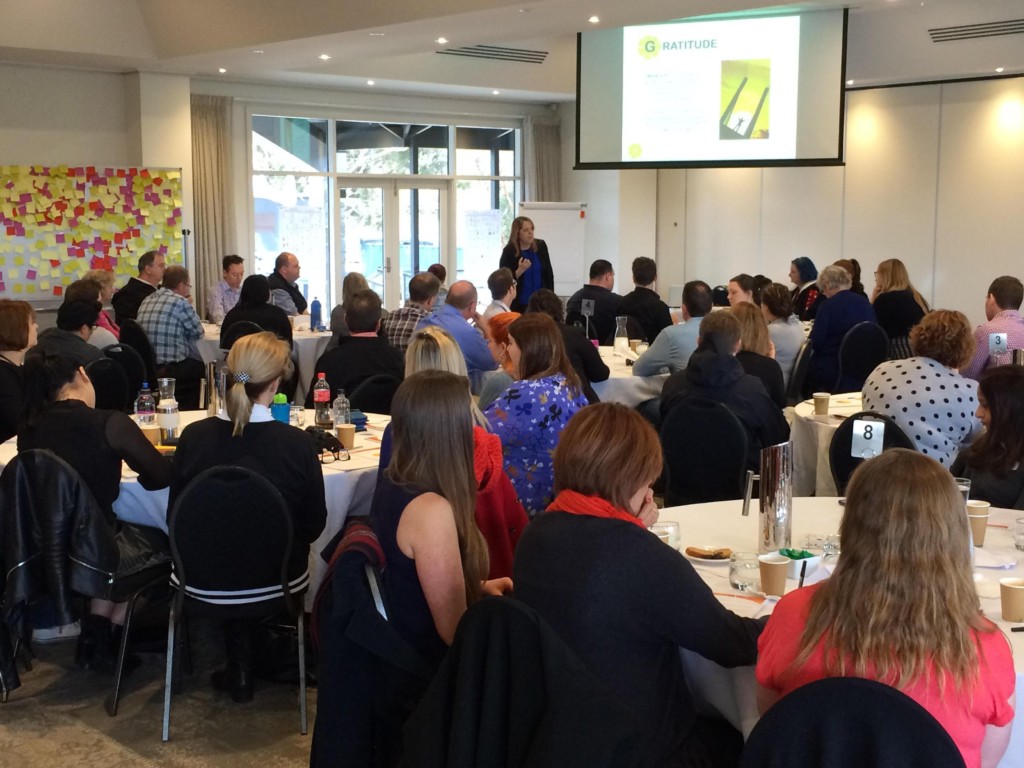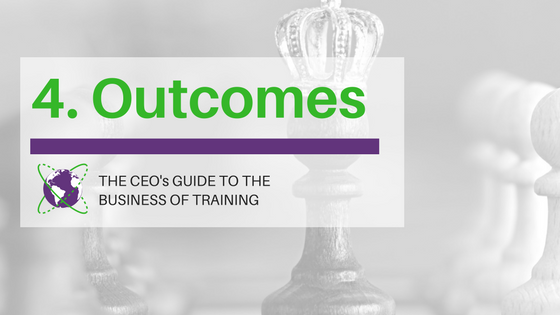Outcomes are what you really want to see, as the Chief Executive of an organisation. You are accountable for achieving the targets set in your strategy, which includes achieving a good ROI on activities like training.
When it comes down to the wire, the only thing that matters is the outcome. This is why you don’t want training.
Training, when you’re driving for an outcome, gets in the way. It involves expenses of all kinds, from money to time. You have to pay staff even though they’re not working, and those who train them. There is time spent in setup. There are additional expenses in venues, resources, catering… The list goes on.
None of these things are outcomes. They are barriers, which is why micro-learning technology is so attractive: It gives you the impression that you can achieve the same outcome but without the barriers.
If as a CEO you think you don’t feel this, stay with me. I want you to consider two different scenarios that give us a picture of what it might mean to get to the training outcomes your business requires.

Training x Design’s Director Gina Brooks runs an immersive training session as part of the ORANGES program.
Which approach to training creates the best outcomes?
Let’s have a look at two fictional CEOs to see which approach is best.
To your left is a high-powered CEO in a utilities company, whose name is Joan. She has several hundred staff in the company’s offices, and many more field staff scattered across the state.
To your right is Sam. Like Joan, Sam is also a high-powered CEO in a utilities company. Sam’s business is similar to Joan’s. Both of these CEOs are fiercely outcomes-oriented.
Sam and Joan approach training in different ways, and as you will see, this is largely a matter of mindset and perspective. Let’s have a look.
Joan is all about the bottom line. Her board expects her to deliver good returns on all investments, training included. She feels that training is important, but also that it’s not hard to teach people. She has gone down the route of micro-learning and team empowerment. She believes that giving good people the ability to up- or cross-skill at their own rates is easy with the right technology.
Sam, just like Joan, is all about the bottom line, and his board expects the same thing. Sam understands that training is important, but unlike Joan, he’s gone down the route of immersion training. He believes that immersion, even with its apparent hassles and costs, is more effective over the long-term.
Which one of these is correct?
Which one creates the best outcome for their organisations? And is it actually the case of one type of learning intervention being better than the other?

Which learning intervention is the best option and will return you the highest score?
Looking solely at training approaches misses one critical factor
The critical factor we want to look at is what happens outside of the training room.
Each of the learning methods of our two CEOs, Joan and Sam, has merit. But when we examine each one as isolated instances, we start evaluating one over the other.
The uncomfortable truth is that how you evaluate will come down to your own experiences, preferences, likes and dislikes.
This is why the environment outside of training becomes so important.
I’d like to introduce you to a concept known as the Forgetting Curve. It was a concept first described in 1885 by Hermann Ebbinghaus. The Forgetting Curve describes the speed of forgetting, when it comes to learning. You might not know, for example, that most people only retain 50% of a learning session by the next day. This curve was validated in 2015 by Murre and Dros; you can read their research paper here.
This means that retention is reliant on revisiting what was learned, and quickly. Many thinkers believe that you must do it every two days at a minimum. However, this is not absolute. The truth is, the ideal interval depends on how long you want to retain [PDF] the knowledge.
Does this mean that you have to make training a permanent fixture? Keep people in the learning environment? Goodness, no! It means you need the right cultural environment, one that encourages retention.
One way to do this is through coaching. Coaching changes the outcome, by increasing the application of learning by 70%. It turns workplace learning into workplace productivity.

Effective coaching is what makes the difference in learning retention.
Just because you have leaders, it doesn’t mean you have coaches
We elevate the right people into leadership roles for many reasons. Often, it’s because they exhibit leadership skills, and because they understand the business extremely well.
But it’s not often that we do it because they are great coaches. You want to know the worst thing about this? If you’re a leader who thinks you’re a good coach, chances are ‘you’re a good deal worse than you imagine.’
If you think that coaching is a fluffy, people skill, you’re not alone. But the truth is, if you are serious about outcomes, then listen up: Coaching-in the skills of your team after training can increase your profits.
Same technique, different application
Currently, my company, Training x Design, is taking a number of organisations through leadership programs, one of which includes ORANGES. If you don’t know about ORANGES, here is an introduction:
Of our clients, two of them – a state government department and a not-for-profit – are approaching training in different ways. The not-for-profit has chosen an immersive leadership program. The government department has chosen ORANGES.
While their training structures and components differ, both organisations have chosen immersive training.
Immersive training creates shift – fast.
As a professional, you already know what kind of commitment it takes to make real shift. This is why immersive training is so important. It isolates the learning, and it creates an environment in which mindsets and attitudes can shift.
When immersive training is followed by coaching, it is a fast, powerful way to drive your organisation towards your outcomes. It shifts whole groups of people in the same way, at the same time, towards the same outcome.
It’s also fairer on your leaders, who are empowered to drive the right change to the right outcome.
Micro-learning creates a retention culture
Once the team has shifted how it thinks and feels, so that its members can act to create your outcomes, you can apply micro-learning with great success. It helps your team to revisit and embed the lessons learned over the long-term.
So why does immersion have it in spades over micro-learning when it comes to outcomes?
Because immersion allows your team members to challenge how they think and feel about things in a safe space, as a collective.
In contrast, micro-learning requires people to find their own motivations, alone. They then have to be self-motivated to do the learning, and they do it at a different pace from everyone else. You end up with a staggered, sometimes incomplete, change. But because everybody marked the course ‘complete’, you may not see it until it’s too late.
To achieve real outcomes, fast, you need the right method & the right environment
Remember when I asked you which one was correct, Sam or Joan? You’ll now understand why it’s the case when I say that neither is correct.
Both Joan and Sam believe they are getting outcomes. But imagine what would happen if they were able to collaborate and share the benefits of each type of learning intervention.
Now, imagine what would happen if then supported the coaching and ongoing support to make their changes really fly. They wouldn’t just achieve their outcomes; they’d blow them away.
You can create shift and achieve your outcomes, too
You can be a CEO in just such a position, by taking advantage of a limited number of consultations we are making available in June 2018.
Put yourself in the right position before the new financial year and discover how you can make your company soar by changing how you approach workplace learning.
If you truly want outcomes, and not just more training, you can’t afford to miss out. Book now by contacting Gina directly, on 1300 662 907.




Leave A Comment